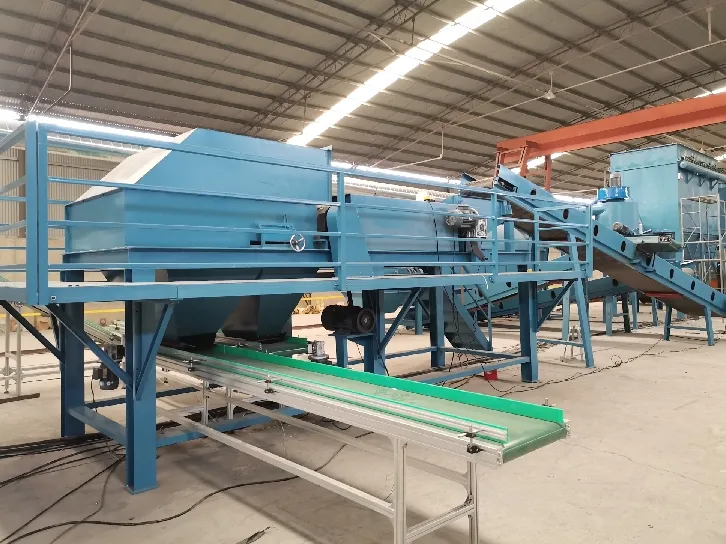

Lap . 14, 2024 12:29 Back to list
Eddy Current Recycling An Innovative Approach to Waste Management
Eddy current recycling is a cutting-edge technology that has gained traction in recent years as an efficient method for sorting and separating non-ferrous metals from waste materials. This innovative approach not only contributes to environmental sustainability but also promotes resource recovery, making it an essential component of modern waste management systems.
At the heart of eddy current recycling is the principle of electromagnetic induction. When a conductor, such as aluminum, passes through a magnetic field, it generates electric currents, known as eddy currents, within the material. These currents produce their own magnetic fields, which can cause the conductor to repel from the original magnetic field, allowing for the separation of non-ferrous metals from other materials such as plastics and ferrous metals.
One of the primary advantages of eddy current recycling is its ability to process a wide range of materials. This technology is particularly effective for recovering valuable metals from electronic waste (e-waste), automotive scrap, and construction debris. As the demand for recyclable metals continues to rise, the ability to efficiently extract these materials becomes increasingly vital. Eddy current separators can sort materials quickly, often achieving separation rates of up to 99%, which significantly enhances the efficiency of the recycling process.

Moreover, the environmental benefits of eddy current recycling cannot be overstated. By recovering non-ferrous metals, we reduce the need for mining new raw materials, which can be both ecologically damaging and energy-intensive. The recycling process typically requires less energy than extraction and processing of virgin materials, leading to a substantial reduction in carbon emissions. This aligns with global efforts to mitigate climate change and promote a circular economy, where resources are reused and recycled rather than disposed of.
Despite its several advantages, the implementation of eddy current recycling does face challenges. The initial cost of eddy current separators can be high, which may deter some businesses from investing in this technology. Additionally, the effectiveness of the process can be influenced by factors such as the size and composition of the materials being processed. Therefore, continuous advancements in technology and reduction in costs are essential for broader adoption.
In conclusion, eddy current recycling represents a significant leap forward in waste management and resource recovery. Its ability to efficiently separate non-ferrous metals from diverse waste streams not only provides economic benefits but also supports environmental sustainability efforts. As technology evolves and the need for effective recycling solutions becomes more pressing, eddy current recycling will likely play an increasingly important role in shaping the future of waste management and promoting a more sustainable world. By embracing such innovative approaches, we can work towards minimizing waste, conserving natural resources, and ensuring a healthier planet for future generations.
Latest news
Troubleshooting Common Eddy Separator Problems
NewsJul.04,2025
The Role of Metal Recycling Plants in Circular Economy
NewsJul.04,2025
The Impact of Recycling Line Pickers on Waste Management Costs
NewsJul.04,2025
Safety Features Every Metal Shredder Should Have
NewsJul.04,2025
How Industrial Shredders Improve Waste Management Systems
NewsJul.04,2025
How Cable Granulators Contribute to Sustainable Recycling
NewsJul.04,2025